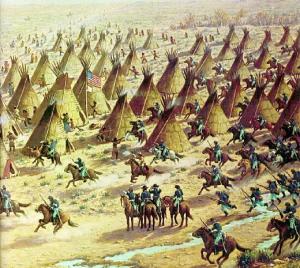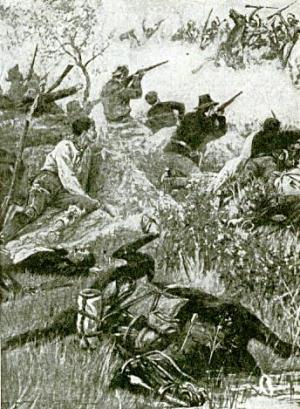Sand Creek Massacre, Colorado

More than 200 Cheyennes, mainly women and children, lay dead following Col. John M. Chivington’s destruction of Black Kettle’s Southern Cheyenne village, nestled along Sand Creek in southeastern Colorado.
The Chivington massacre on November 29, 1864 included the mutilation of Indians. It's one of the most sordid affairs between whites and American Indians.
Black Kettle’s village had camped near Fort Lyon with the understanding that they were friendly, an American flag flew from the village. The site is located on private land.
Beecher's Island, Colorado

Maj. George Forsyth at the head of 50 frontiersmen, in pursuit of raiding Cheyennes, was attacked by a large party of Cheyennes on the morning of September 17, 1868.
Forsyth’s party took refuge on a sandbar in the Republican River located in eastern Colorado. The Indians organized several massed charges, only to be blunted each time.
By the afternoon of the 17th, more than 600 Indians participated in the assaults, however, the attacks decreased following the death of Roman Nose, one of the leading Cheyennes. Lt. Frederick Beecher, for whom the battle site is named, and 21 other defenders were killed.
The remaining defenders were rescued on September 25 when Capt. Louis Carpenter’s company of 10th Cavalry troops came to their aid. A historical marker commemorates the battle, but the original site has washed away.
Native American History Related Articles
- Indian Wars Of The Old West: Arizona, Part 1
- Indian Wars Of The Old West: Arizona, Part 2
- Indian Wars Of The Old West: Arizona, Part 3
- Indian Wars Of The Old West: Colorado, Part 1
- Indian Wars Of The Old West: Colorado, Part 2
- Indian Wars Of The Old West: Montana, Part 1
- Indian Wars Of The Old West: Montana, Part 2
- Indian Wars Of The Old West: South Dakota
- Indian Wars Of The Old West: Texas
- Indian Wars Of The Old West: Wyoming

